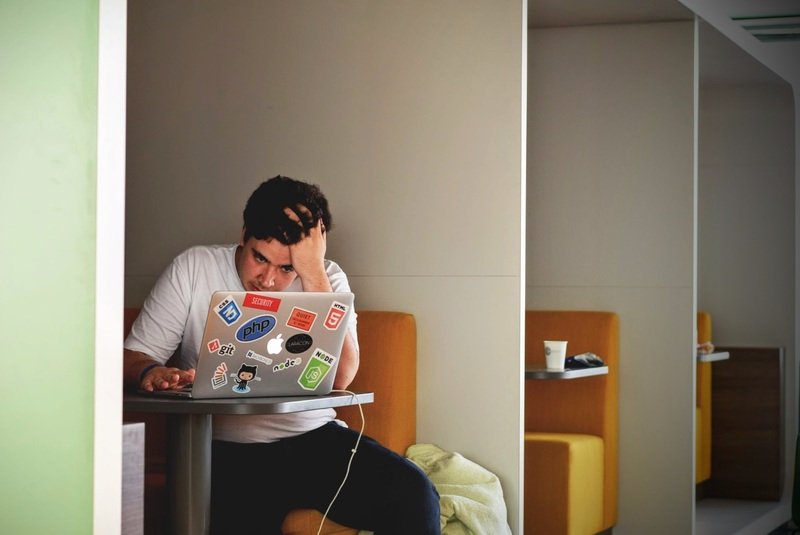
I’m listening to this podcast and they’re talking about happiness and what makes people happy and it made me reflect on my current situation.
The podcast is You Are Not So Smart, and I love it so much. David McRaney has been writing about all the various ways our brains fool ourselves for a long time. It started as a blog, way back in the day, before it became a podcast. He’s done a whole season on logical fallacies; he’s talked about right-wing and left-wing thinking; he’s examined the idea of consciousness itself.
But this episode, the most recent one, Episode 163, is called The Happiness Lab and in it, he interviews Dr. Laurie Santos, who has started a podcast herself called, non-surprisingly enough, The Happiness Lab. They cover a lot of ground together. I don’t know if this episode is one I’d recommend you jump right in on if you’re not familiar with the way McRaney approaches the topic, although it’s hard for me to tell, being a long-time fan.
But the part that made me think “Hey this is something I can write about tonight!” is where the host invites Dr. Santos to explain why so many people seem to be depressed or lonely now, and what may have changed in society to cause that change in the past few decades. She has a somewhat intuitive but still remarkable answer.
ATMs.
She feels, from her research and study of what makes people happy, that generally, our intuitions and feelings about what might make us happy are often wrong—as I said, this is right in the YANSS podcast wheelhouse—and that science can examine the evidence and make recommendations for us to follow, recommendations that will let us live happier lives.
And the science tells her (she tells us) that generally speaking, happier people are also more social. They spend more time around other people. They interact with other people more; they live and work around other people. They don’t hide out in their apartments; they go out to coffee shops instead of using DoorDash or whatever to have food and coffee brought to them.
She traces all this back through the usual suspects: iPhones and always-on internet in our pockets; Twitter and Facebook and Amazon Prime and streaming videos; cell phones and texting and online dating… but the initial inflection point was the ATM. When they were introduced, they represented replacing a human interaction between us and a bank teller with an interaction with a robot, a machine, that had no human qualities.
I’ve written here before about feeling isolated; in an apartment, that’s at least a 30-minute drive from my closest friends’ house, on the outskirts of my city. I’m not in a neighborhood that is nearly as walkable as my beloved Sellwood. There are few good bars I can walk to from here. I have to drive to a grocery store, unlike having two grocery stores in walking distance in my old stomping grounds. And my roommate moved out (for his own reasons, which I understand, but which is still a factor for me now).
In a lot of ways, I’m more isolated than I was. Granted, I wasn’t that social in Sellwood, except that I knew the names of many of the bartenders and waitstaff for the bars and restaurants and coffee shops and diners I would haunt. And my friends rarely came over to visit me, even when they were closer than they are now—but we would hang out from time to time, slightly more often than we do these days.
I don’t just want to focus on the current adverse effects, however. As Dr. Santos suggests, I’d like to take this info and see if I can use it to move in a happier direction. Are there any ways I can spend more time around people?
I do spend time around people at work. I work side-by-side with Val; we share an office. And once or twice a week, Kevin, a fellow tech, works out of that office. Plus I talk to and deal with my users daily. And even though I don’t work with the rest of the tech team (they have their own office and work for other clients), my boss does have regular in-office casual time. Not meetings; we don’t talk about work. We drink adult beverages and hang out and sometimes play games. My job is already more social than my previous job.
I always make a point of going to my favorite Sellwood haunts whenever I can. I like being recognized and knowing the names of the staff there. Those are the ways I’m being more social.
Could I try to interact with my neighbors more? Is that a thing? It seems a difficult hurdle to hurdle over but maybe so.
Ideally, I think, when I move back closer in, I’d like to try living in a big house with a lot of roommates. That seems fun. Last year, when I lived in my sister’s house, even though I’m sure I got on everyone’s nerves sometimes, and I sometimes felt the same about them, it was comfortable having people around. It was my sister and her husband, my niece, and nephew, and their mother-in-law. And my sister is far more social than I am, and by extension, so is her family. They would have people over, throw parties, the niece and nephew would have their friends over… there were always people coming and going. Plus the adorable dog and the two cats. That house was a-rockin’. And I responded to it all.
I’m going to see what I can do to add more of that in my life. I want to do whatever I can to be happier.
For science.